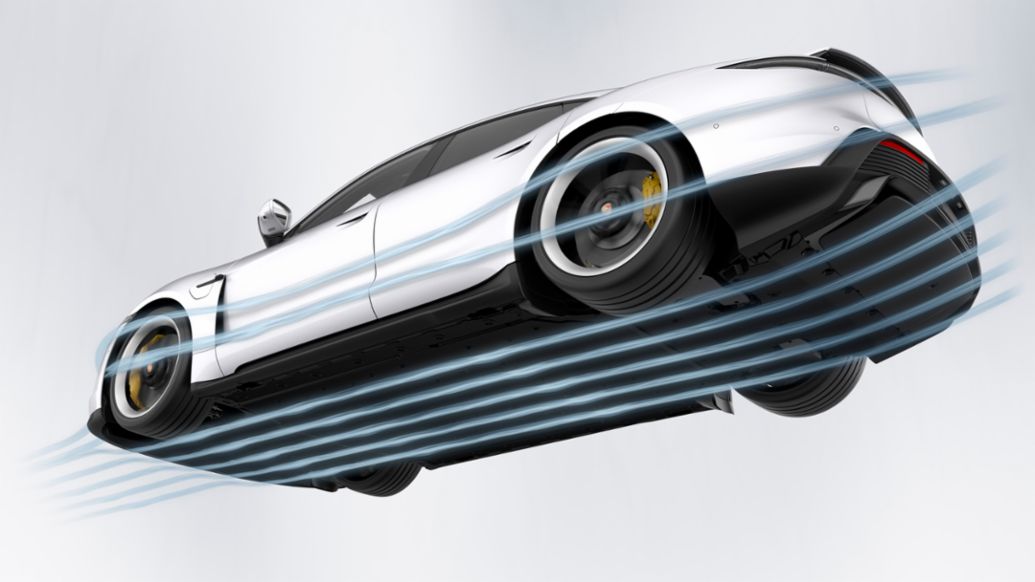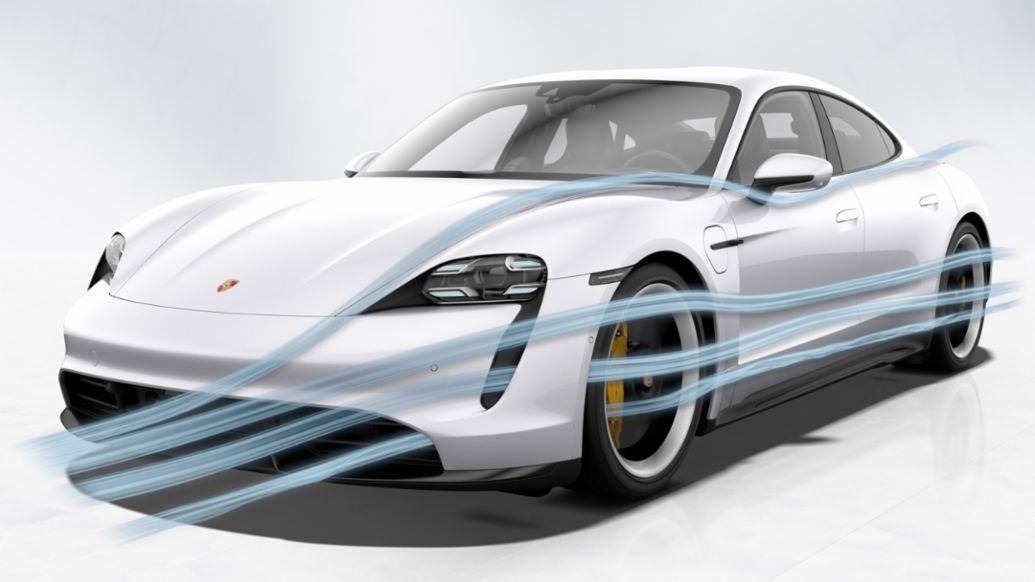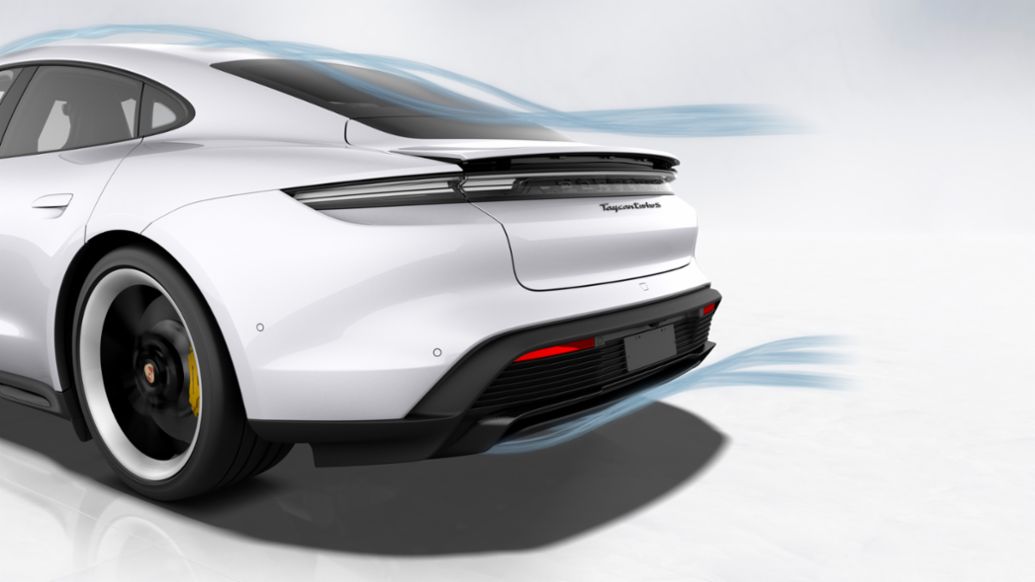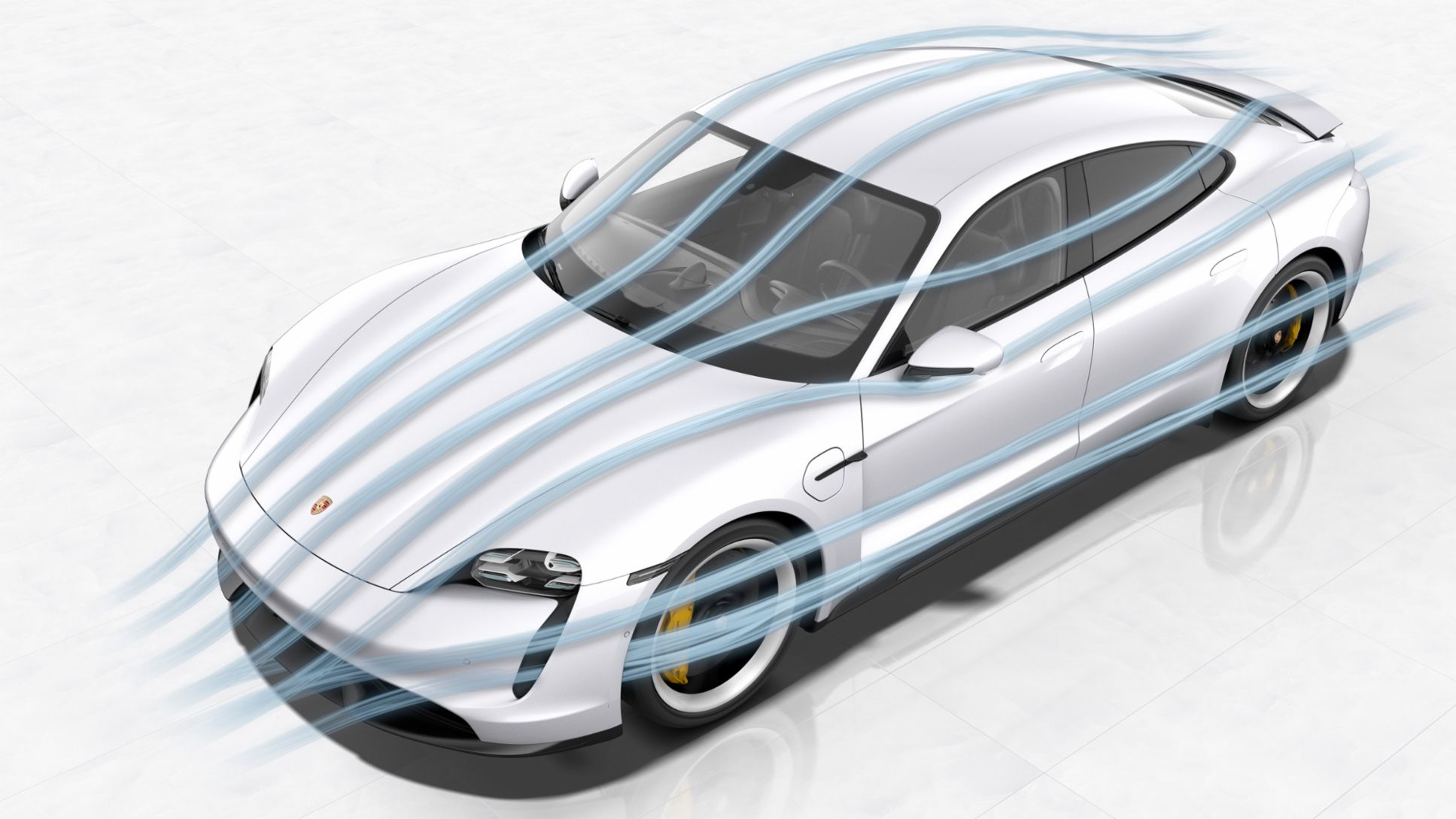With a Cd value from 0.22, the Taycan offers the best drag coefficient of all current Porsche models. The front surface area is 2.33 m2. This results in an effective drag of 0.513 m2. The superb aerodynamic performance was achieved through extensive work on the design concept and fine tuning: before spending around 1,500 hours in the wind tunnel, the Taycan had already run through 3D CFD simulations (Computational Fluid Dynamics; numerical flow simulation) and completed around 900 hours in the wind tunnel as a 1:3 model.
The aerodynamic measures include air curtains: the headlights appear to float within large air inlets, which guide the air like a curtain over the front wheel housings. This reduces turbulence and – combined with the aerodynamically refined wheels – air resistance as well.
In the Taycan, it was possible to completely panel the underbody as there is no hot exhaust gas system. The suspension links are fully covered and equipped with air ducts. At the rear in particular, the aerodynamics experts have succeeded in making use of the freedom offered by a fully electric vehicle by implementing an extremely wide rear diffuser. This creates aerodynamic efficiency: the perfect combination of low drag and reduced lift.

Measures in the area of active aerodynamics include the lower side air intakes at the front. With their fully variable, individually controllable cooling air flaps, they supply the two radiators located towards the outside. At the same time, the flow onto the brakes is controlled as required, via a brake air duct. The chassis control unit continuously monitors the current thermal load on the brake discs and requests targeted cooling of the brake discs if necessary – for example on the race track.
Porsche Active Aerodynamics (PAA) thus offers several advantages at the front of the Taycan: When the cooling air flaps are closed, the system reduces drag and therefore increases range. When the flaps are open, PAA improves both the performance of the cooling system and the brakes at the same time. Control of the cooling air flaps is always demand-driven and depends on the driving mode, speed and cooling requirement.

The Taycan also has active aerodynamics at the rear: depending on the driving situation, the spoiler extends to three different positions and thus influences the car's drag and rear lift. This means it is possible for the new Taycan to be conditioned for best efficiency and range, with the lowest possible drag that is useful on long journeys. It can also be set up with the lowest possible lift on the rear axle to deliver characteristic Porsche sports car performance, for achieving the fastest lap times on a race track.

In addition to the classic elements of Porsche Active Aerodynamics, the new Taycan also makes use of the aerodynamic possibilities offered by its air suspension. Depending on the speed and the selected driving mode, a lower position is activated, which additionally reduces drag (see the article on suspension for details).
Additional content
Sports cars, redesigned with sustainability in mind. The first all-electric sports car, the Taycan, marks the beginning of a new era for Porsche as the company systematically expands its product range in the field of e-mobility. An overview.


